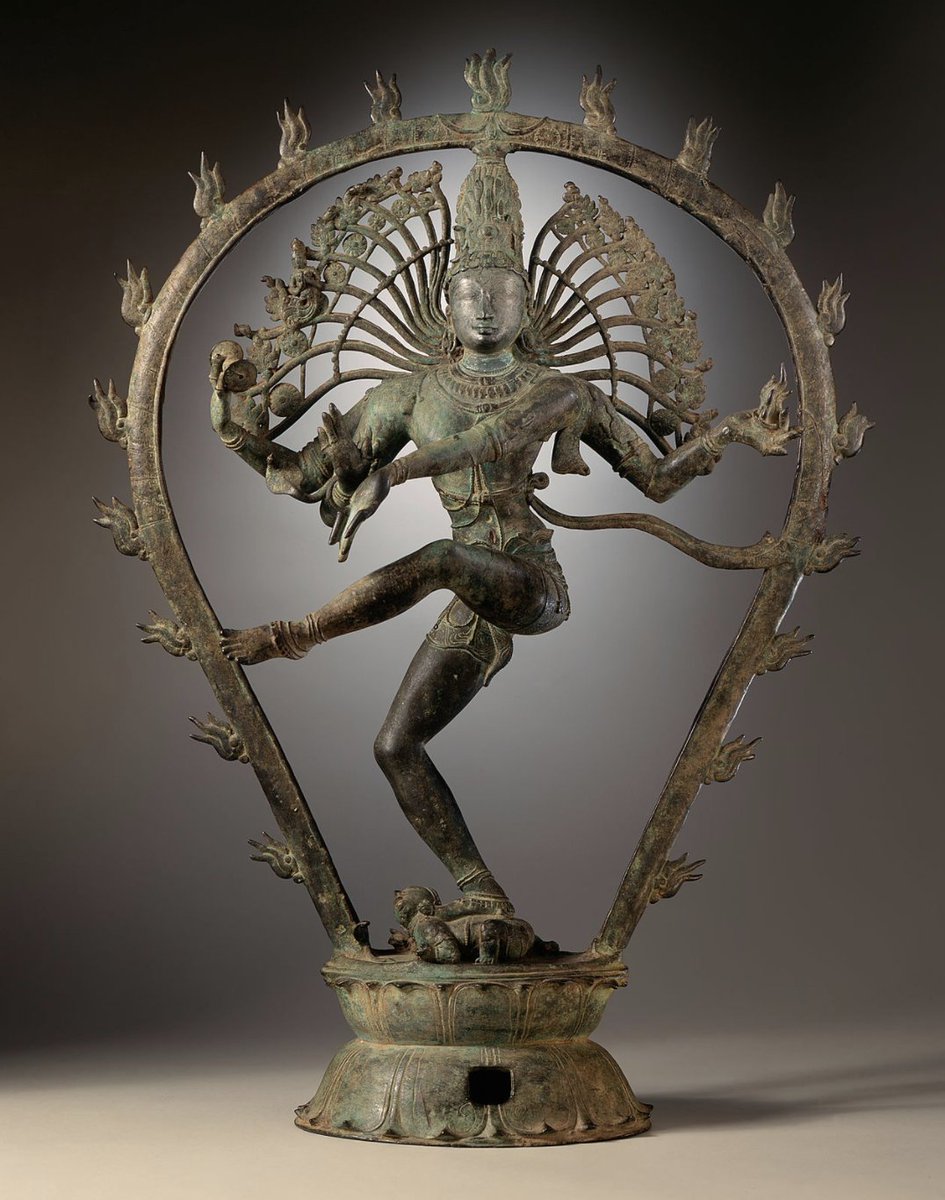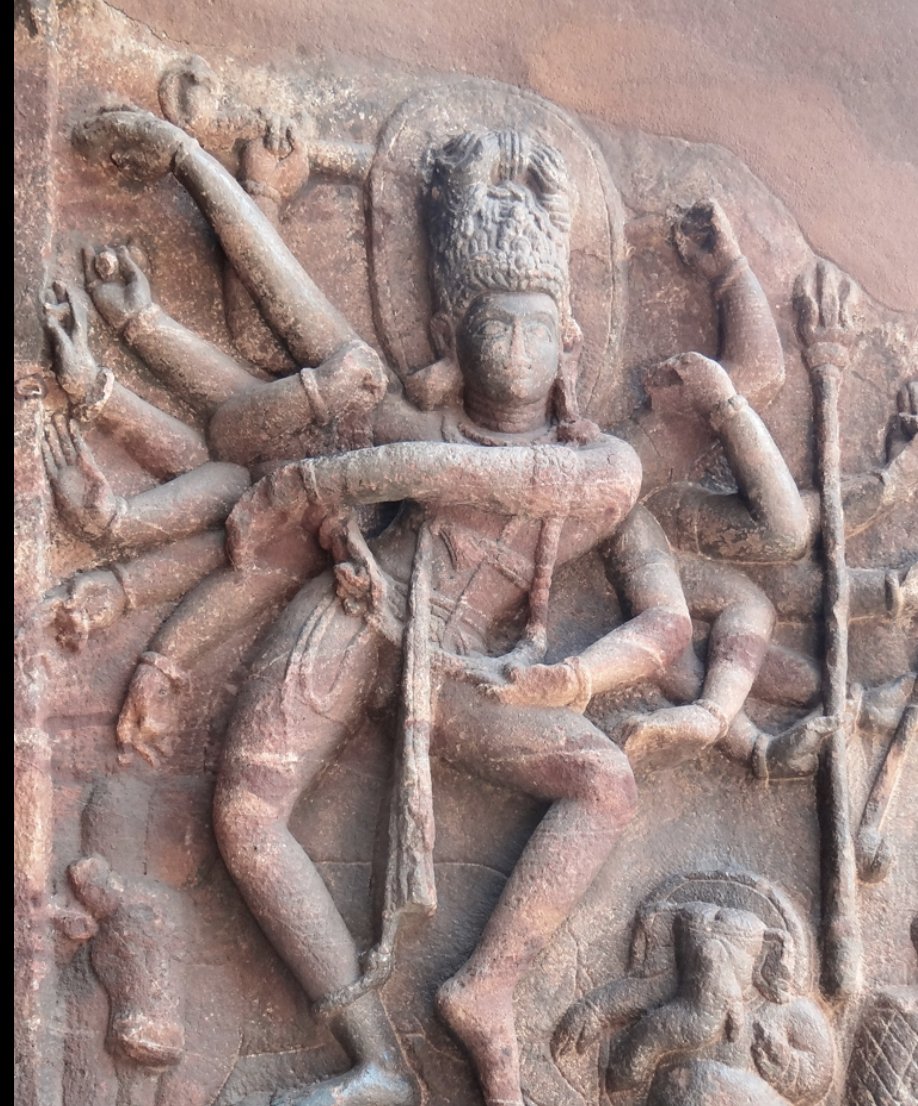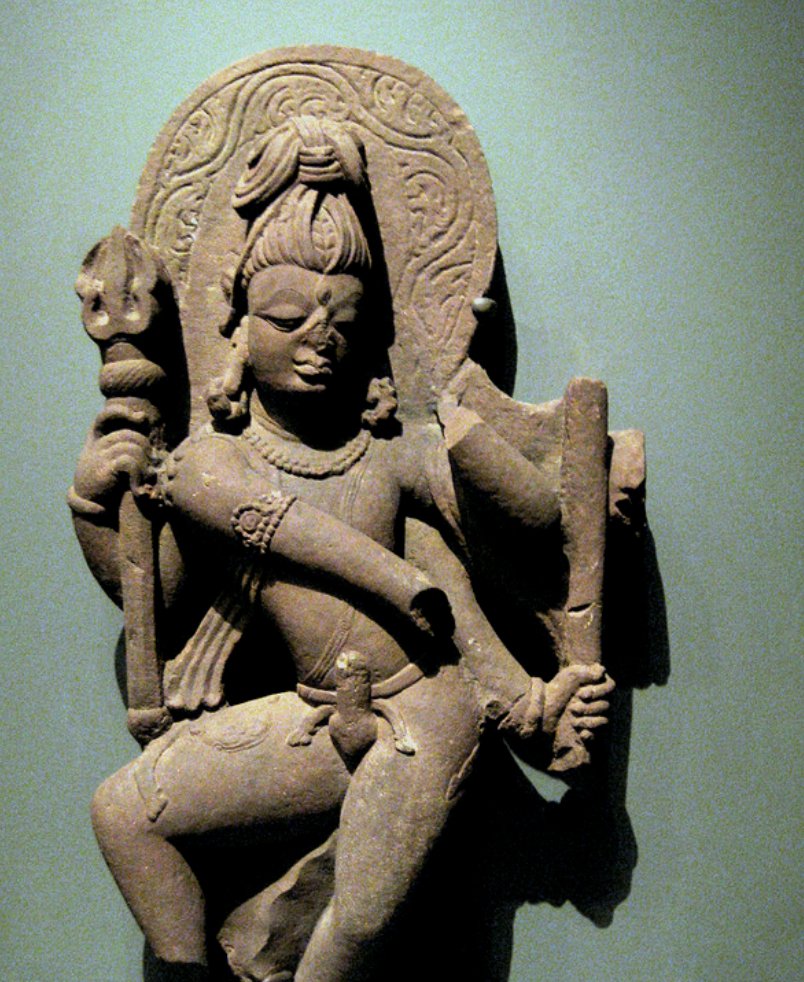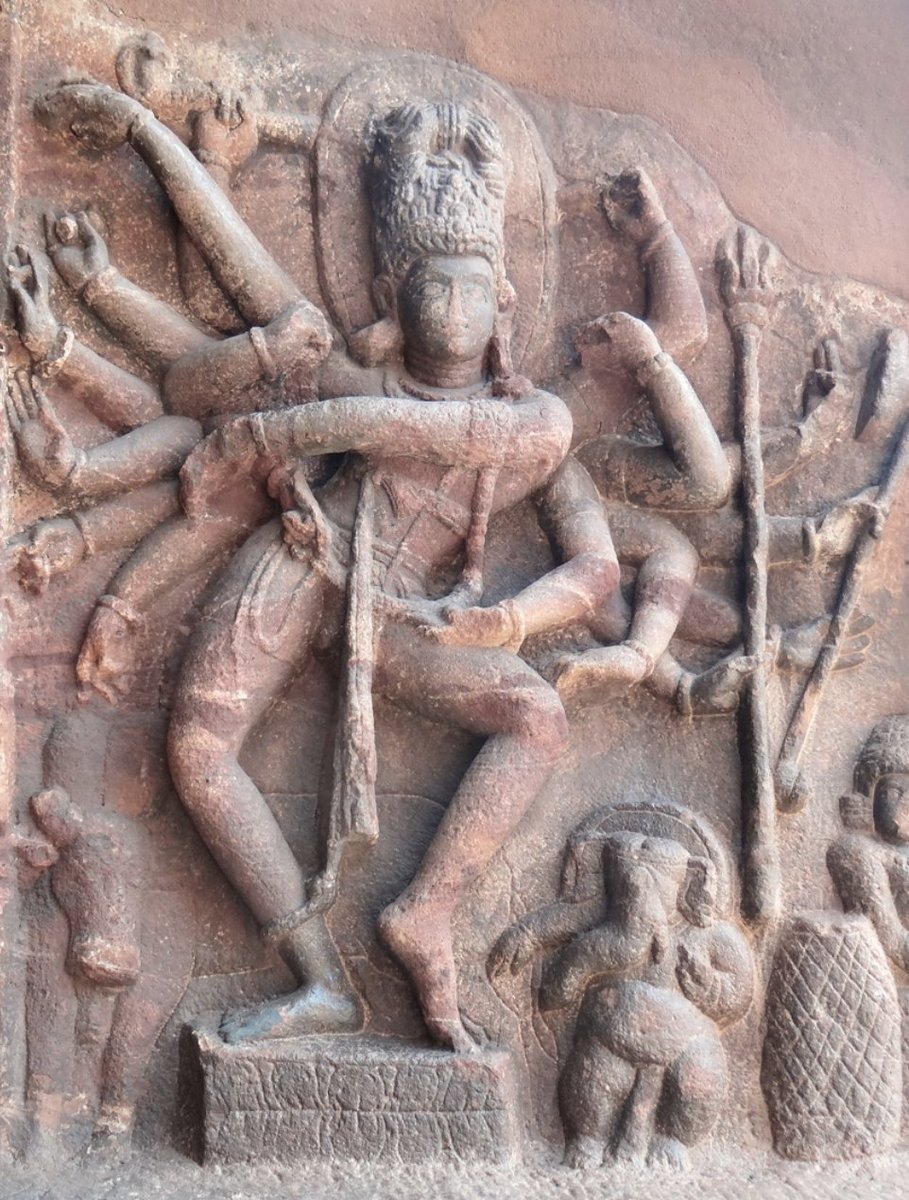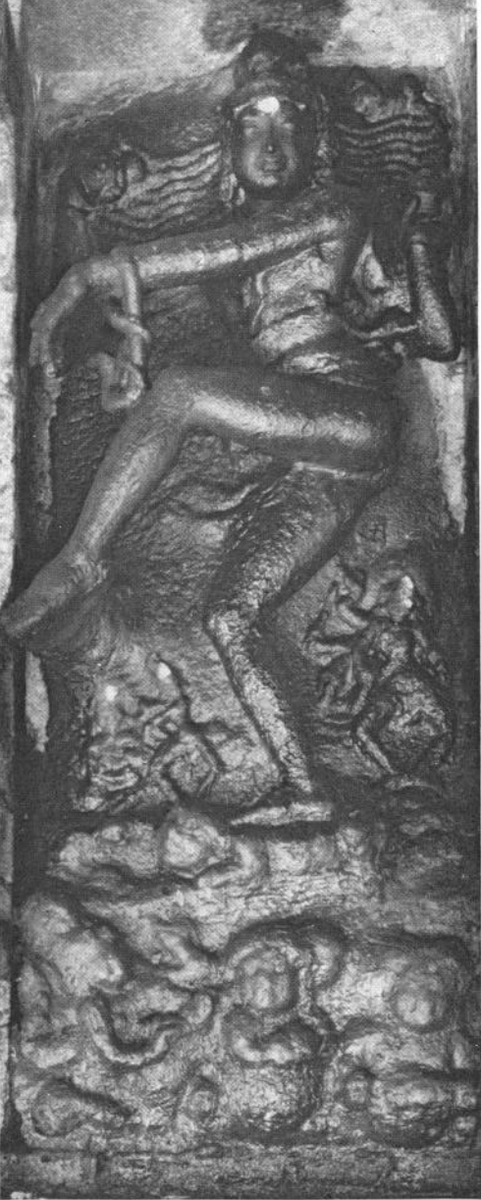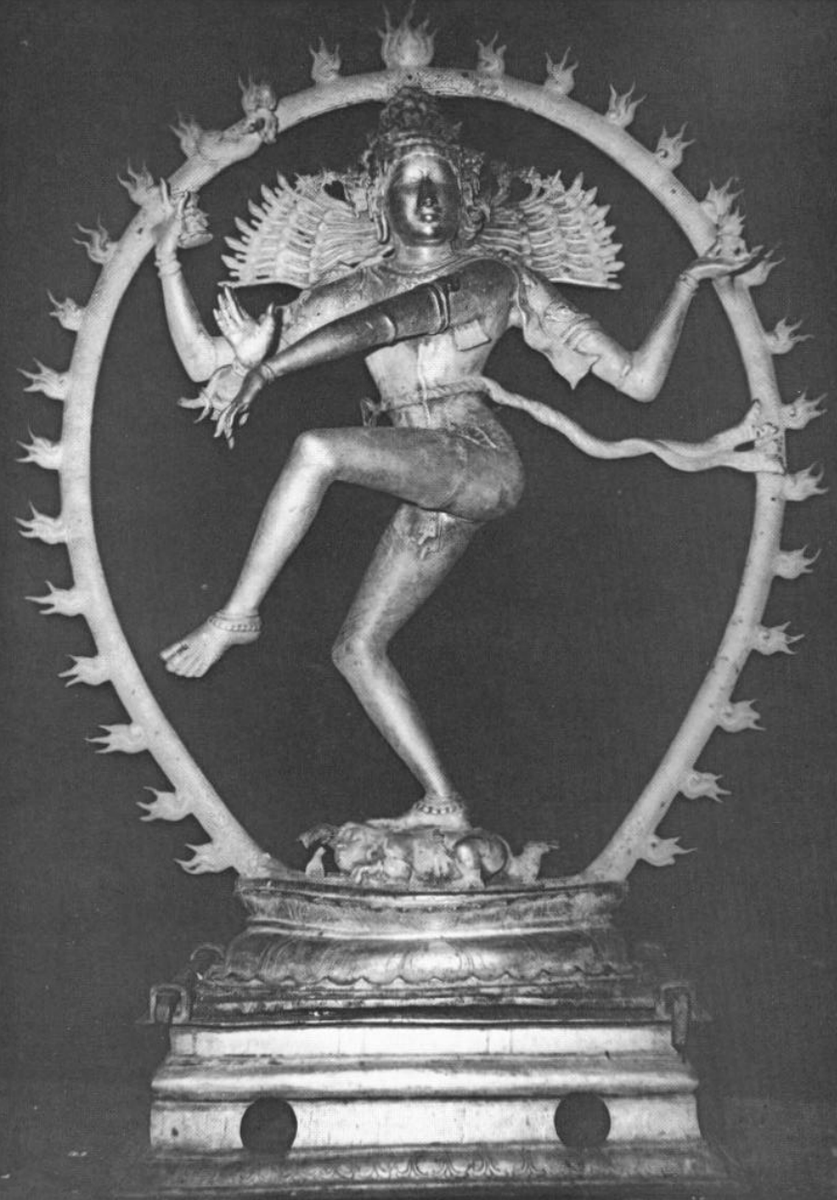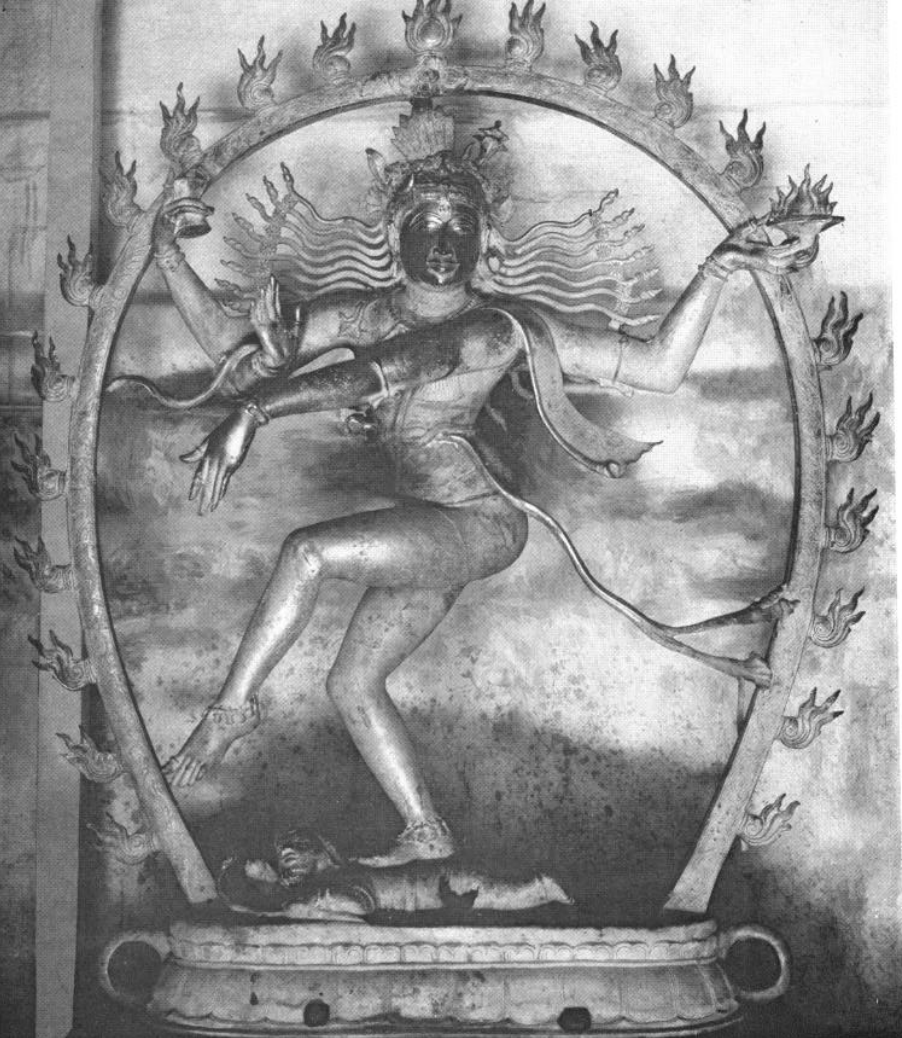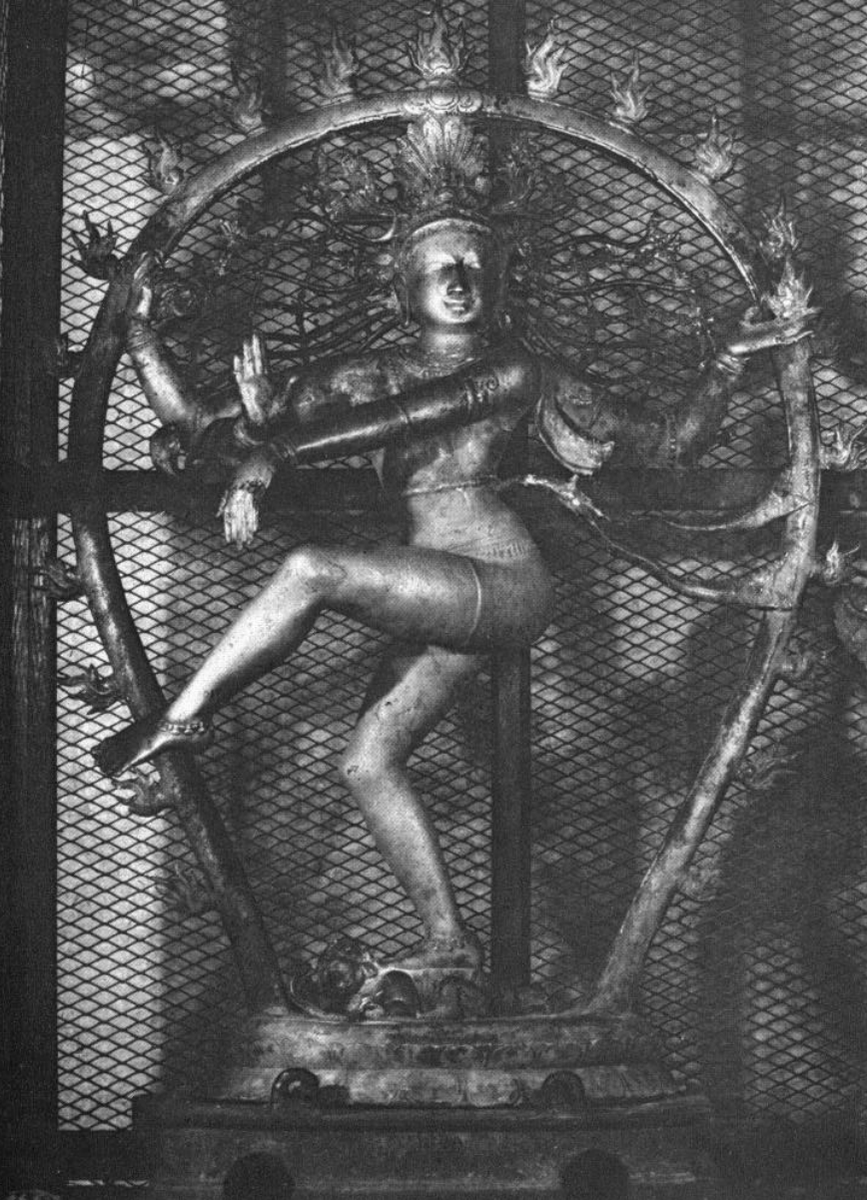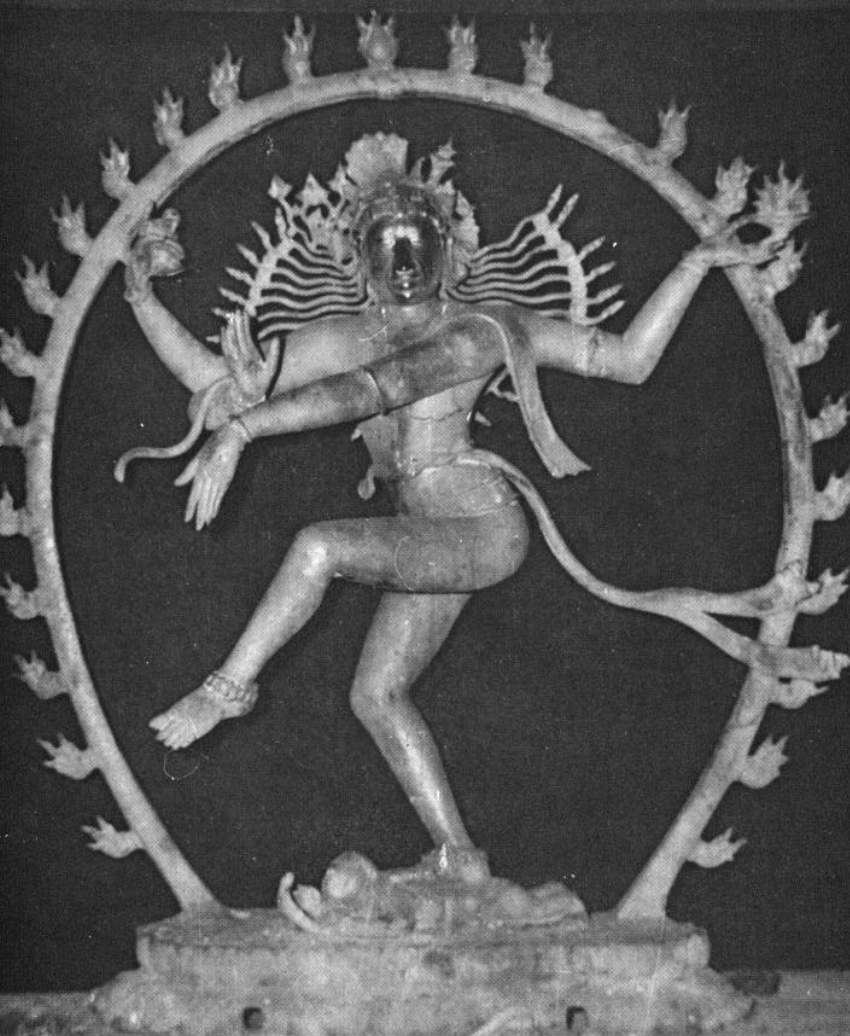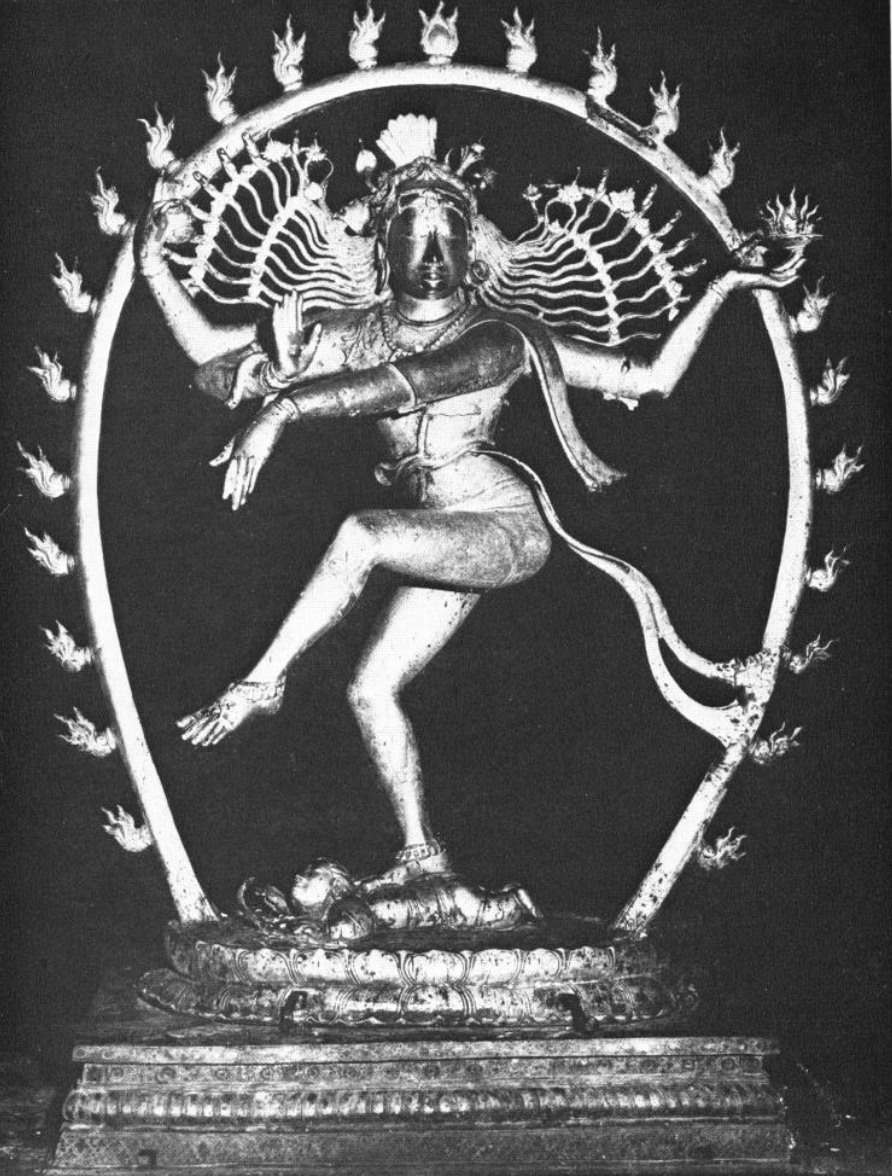The depiction of Mahādeva as Naṭarāja has to be one of the pinnacles of Indian art
Naṭarāja is perhaps best remembered from the Chola bronzes of 10th and 11th cen - one of which is sampled below (from LA museum of art)
But that zenith was reached after centuries of evolution
Naṭarāja is perhaps best remembered from the Chola bronzes of 10th and 11th cen - one of which is sampled below (from LA museum of art)
But that zenith was reached after centuries of evolution
This thread traces the evolution of Naṭarāja with a particular focus on the great Naṭarāja shrines patronized by Medieval Cholas of 9th and 10th cen
Most of all the efforts of the great Chola Queen of late 10th cen - Sembiyan Mahadevi
Raja Raja Chola& #39;s grandmother
Most of all the efforts of the great Chola Queen of late 10th cen - Sembiyan Mahadevi
Raja Raja Chola& #39;s grandmother
In its mature 10th century form the Nataraja has some distinguishing features that has won the icon worldwide attention
1. The pose of Ananda-Tandava - the dance of ecstasy
2. Right leg crushing the back of "Apasmara" - the dwarfish demon of ignorance, who is clasping a cobra
1. The pose of Ananda-Tandava - the dance of ecstasy
2. Right leg crushing the back of "Apasmara" - the dwarfish demon of ignorance, who is clasping a cobra
3. Left leg is raised and pointed across the body
4. The deity has four arms
5. Upper left hand holds a flame contained in a bowl
5. Upper right hand holds the Damaru (drum)
6. Lower left arm is across the body, whose fingers point to the raised left foot
4. The deity has four arms
5. Upper left hand holds a flame contained in a bowl
5. Upper right hand holds the Damaru (drum)
6. Lower left arm is across the body, whose fingers point to the raised left foot
7. Lower right hand is in "abhaya mudra" - a gesture of reassurance
8. Hair is decorated with a skull, crescent moon
9. Entire figure enclosed within a flamed circle
But this was not always the case
8. Hair is decorated with a skull, crescent moon
9. Entire figure enclosed within a flamed circle
But this was not always the case
Here are a couple of Nataraja figures from earlier periods -
6th century - Badami caves (Karnataka)
8th century - Madhya Pradesh
This is a far cry from the celebrated Chola bronzes
6th century - Badami caves (Karnataka)
8th century - Madhya Pradesh
This is a far cry from the celebrated Chola bronzes
But did the celebrated and mature image of Nataraja arise all of a sudden during the late 10th century when the Chola Queen Sembiyan Mahadevi held sway?
Or was it a longer process? What about the role of Pallavas in the development of the Nataraja iconography?
Or was it a longer process? What about the role of Pallavas in the development of the Nataraja iconography?
These are questions that have been asked lately
Most notably by Sharda Srinivasan who authored a book in 2004 titled "Cosmic Dancer: On Pallava Origins for the Nataraja Bronze"
This recent work takes on the established wisdom that the Nataraja we know is a Chola invention
Most notably by Sharda Srinivasan who authored a book in 2004 titled "Cosmic Dancer: On Pallava Origins for the Nataraja Bronze"
This recent work takes on the established wisdom that the Nataraja we know is a Chola invention
The Pallavas as we are aware ruled over Tamil country from 5th to early 9th cen - when they were overthrown by the Cholas
And they were central not just in hastening and deepening the penetration of Aryan culture in deep south, but also in popularizing the use of "stone" in art
And they were central not just in hastening and deepening the penetration of Aryan culture in deep south, but also in popularizing the use of "stone" in art
When the Pallava king Mahendravarman (600-630 CE) converted to Shaivism it led to an explosion of Hindu art in stone
Best commemorated in this Mamallapuram inscription which praises Mahendravarman for building in
"neither brick, nor timber nor mortar”
Stone was now preeminent
Best commemorated in this Mamallapuram inscription which praises Mahendravarman for building in
"neither brick, nor timber nor mortar”
Stone was now preeminent
It is during the Pallava period that the four armed Shiva with the raised leg and the "dwarf" made their appearance
Prior to Pallavas, in the Natarajas up north, the knees are pointed outward and both feet touch the ground
E.g. this Badami Nataraja from 6th cen
Prior to Pallavas, in the Natarajas up north, the knees are pointed outward and both feet touch the ground
E.g. this Badami Nataraja from 6th cen
Moreover the Badami Nataraja has 16 arms!
There is another Gupta-era Nataraja from Sirpur having 8 arms.
Not four arms as is the norm in the Nataraja of Chola bronzes
So the transition to the "canonical" four arms appears to have been a development during Pallava period
There is another Gupta-era Nataraja from Sirpur having 8 arms.
Not four arms as is the norm in the Nataraja of Chola bronzes
So the transition to the "canonical" four arms appears to have been a development during Pallava period
An early example of the "classical" South Indian representation of Nataraja is from a temple Mahendravarman built in Tiruvannamalai in the village of Seeyamangalam
This has one of the earliest "classical" Natarajas with four arms, the raised leg AND abhaya mudra!
This has one of the earliest "classical" Natarajas with four arms, the raised leg AND abhaya mudra!
What is missing though is the "dwarf" demon at the bottom.
And also the lower left arm extends away from the body rather than across the body unlike the Chola bronzes
But what this proves is - that Nataraja as we know it did evolve significantly during the Pallava period
And also the lower left arm extends away from the body rather than across the body unlike the Chola bronzes
But what this proves is - that Nataraja as we know it did evolve significantly during the Pallava period
The "standard" Nataraja with the dwarf and all other distinguishing features included likely emerged towards the end of 9th century
The archeologist Douglas Barrett identifies three phases of Nataraja icon evolution during the high noon of Chola rule -
The archeologist Douglas Barrett identifies three phases of Nataraja icon evolution during the high noon of Chola rule -
1. Aditya I phase (866-940 CE)
2. Second phase (940-970 CE)
3. Sembiyan Mahadevi phase (970-1014CE)
Among these the third represents the "apex" - a period in Chola history of hectic temple building
2. Second phase (940-970 CE)
3. Sembiyan Mahadevi phase (970-1014CE)
Among these the third represents the "apex" - a period in Chola history of hectic temple building
Today this era is largely remembered for Raja-Raja Chola
But we forget Sembiyan Mahadevi - Raja Raja& #39;s grandmother
In some ways the Ahalyabai Holkar of her day - a legendary queen whose piety and patronage are forgotten today
But we forget Sembiyan Mahadevi - Raja Raja& #39;s grandmother
In some ways the Ahalyabai Holkar of her day - a legendary queen whose piety and patronage are forgotten today
Mahadevi not just built several temples but also refurbished several old "brick" temples by rendering them in stone!
But for these refurbishments, many of the ancient brick temples (possibly pre-Chola) would not have survived into our times
But for these refurbishments, many of the ancient brick temples (possibly pre-Chola) would not have survived into our times
It was also likely during her epoch that the practice of rendering Nataraja in bronze picked up
Earlier Pallava renderings as we just saw are in stone.
(though there might be some bronzes from Pallava period I am unaware of)
Earlier Pallava renderings as we just saw are in stone.
(though there might be some bronzes from Pallava period I am unaware of)
An early "classic" Nataraja from the Sembiyan Mahadevi phase is the temple of "Uma Maheshwara" at Konerirajapuram
This is a village today in the Mayiladuthurai (Skt : Mayavaram) near Kumbakonam
This is a village today in the Mayiladuthurai (Skt : Mayavaram) near Kumbakonam
This is the classic "ananda-tandava" pose
With the only difference being -
The cobra descends not from the right forearm but the left
Also the Goddess Ganga is shown in the locks not on the deity& #39;s right but the left
With the only difference being -
The cobra descends not from the right forearm but the left
Also the Goddess Ganga is shown in the locks not on the deity& #39;s right but the left
Another temple built / refurbished by Sembiyan Mahadevi in late 10th century is the Agastyeshwara temple at Anangur (near Namakkal / Trichy)
Built by Mahadevi just before 979 CE
Interestingly in this Nataraja there is no Ganga in the locks!
Built by Mahadevi just before 979 CE
Interestingly in this Nataraja there is no Ganga in the locks!
Even in the Thirukoteeswarar Temple (Tanjore district) at Tirukkodikaval there is no Ganga in the Nataraja depiction, but it has all the other features associated with the classical Nataraja
This is also a temple built by Sembiyan Mahadevi (980 CE)
This is also a temple built by Sembiyan Mahadevi (980 CE)
Some other temples built by Sembiyan Mahadevi in that phase (all of which have Nataraja)
(also all these Natarajas have Ganga in the locks)
Kailasanathar temple at Nagapattinam (981 CE)
Gangajatadhara temple at Govindaputtur (982CE)
Apatsahyeshwara temple at Aduturai (985 CE)
(also all these Natarajas have Ganga in the locks)
Kailasanathar temple at Nagapattinam (981 CE)
Gangajatadhara temple at Govindaputtur (982CE)
Apatsahyeshwara temple at Aduturai (985 CE)
During the reign of Raja-Raja Chola, Sembiyan Mahadevi continued to patronze construction of temples -
Some Nataraja temples from this phase
Siddhanathaswami temple, Thirunaraiyur (986 CE)
Achaleswara shrine, Thiruvarur (991 CE)
Uktavedishwara temple, Kuttalam (991 CE)
Some Nataraja temples from this phase
Siddhanathaswami temple, Thirunaraiyur (986 CE)
Achaleswara shrine, Thiruvarur (991 CE)
Uktavedishwara temple, Kuttalam (991 CE)
Some of these Natarajas from this late Sembiyan Mahadevi phase are shared below -
Achhalapuram (990 CE)
Achhalapuram (990 CE)
So far we have not discussed the most famous Nataraja shrine of all - the great Thillai Nataraja temple of Chidambaram
Even this major shrine likely attained preeminence in the Sembiyan Mahadevi phase
But since has overtaken the other Nataraja shrines in the popular imagination
Even this major shrine likely attained preeminence in the Sembiyan Mahadevi phase
But since has overtaken the other Nataraja shrines in the popular imagination
Will conclude by linking to this fine talk by Aldous Huxley who extols the symbol of Nataraja
And on why we ought to celebrate Him https://www.youtube.com/watch?v=32oo0oyLUdE">https://www.youtube.com/watch...
And on why we ought to celebrate Him https://www.youtube.com/watch?v=32oo0oyLUdE">https://www.youtube.com/watch...
In Huxley& #39;s words - there is no comparable symbol in Western art
"We don’t have anything that approaches the symbolism of this work of art, which is both cosmic and psychological."
"We don’t have anything that approaches the symbolism of this work of art, which is both cosmic and psychological."
References for the thread -
1. Mortimer Wheeler Lecture by Douglas Barrett in 1976 (British Academy) (many pictures sourced from here)
https://www.thebritishacademy.ac.uk/pubs/proc/files/62p181.pdf
2.">https://www.thebritishacademy.ac.uk/pubs/proc... On the origins of Nataraja - http://www.mahavidya.ca/2020/01/02/siva-nataraja-bronzes-origins/">https://www.mahavidya.ca/2020/01/0...
1. Mortimer Wheeler Lecture by Douglas Barrett in 1976 (British Academy) (many pictures sourced from here)
https://www.thebritishacademy.ac.uk/pubs/proc/files/62p181.pdf
2.">https://www.thebritishacademy.ac.uk/pubs/proc... On the origins of Nataraja - http://www.mahavidya.ca/2020/01/02/siva-nataraja-bronzes-origins/">https://www.mahavidya.ca/2020/01/0...

 Read on Twitter
Read on Twitter